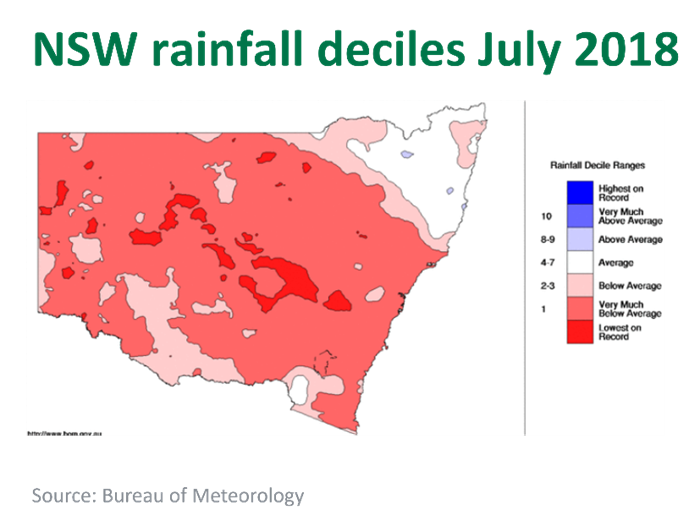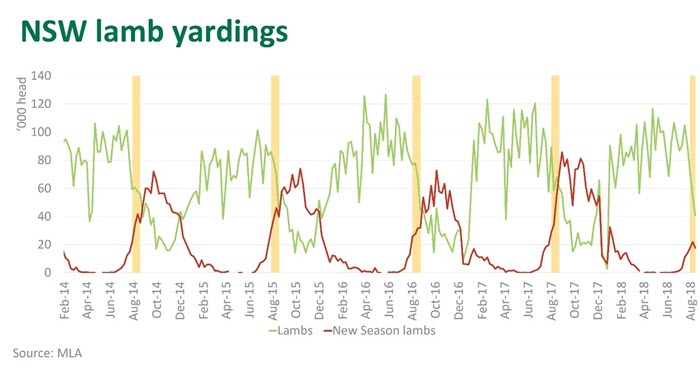Drought delays new season lambs in NSW
NSW – where over a third of Australia’s sheep flock resides – has had it’s driest January to July period since 1965, and the warmest on record for daytime temperatures.
NSW producers have had little reprieve as the warm days, cool nights and much drier than average conditions have continued through winter. July marked the seventh consecutive month of below average rainfall for NSW and daytime temperatures were 2.2°C warmer than average, according to the Bureau of Meteorology. The clear skies and dry soils also meant that night time temperatures were lower, resulting in widespread frosts at times.
These drying conditions have seen pasture and water availability deteriorate quickly, supplementary feed prices continue to rise, and reports of lower lamb marking and weaning rates. This has had a significant impact on the supply of lambs coming onto the market in NSW, which has been reflected in the record lamb prices of late.

Of all the states, the first of the new season lambs for the year typically come onto the market in NSW, with numbers historically starting to ramp up at the beginning of August in a regular season. Also at this point of the year, the previous season’s lamb supply winds down. This year, however, there has been a delay in new season lambs presenting at NSW saleyards, due to a combination of lower marking rates, meaning fewer lambs on the ground, and many producers struggling to finish stock to sale-ready weights.
For the first three weeks of August this year, just under 57,400 new season lambs had been sold through MLA reported saleyards in NSW – down 51% from the same time last year, and representing 26% of total NSW lamb saleyard throughput for the period. As highlighted in the chart below, new season lamb supply so far this year has been considerably lower than in previous years. Last year, as a comparison, there were almost 117,400 new season lambs sold across NSW saleyards in the first three weeks of August – making up 35% of total NSW lamb yardings for the period.

As lambs have become more difficult to source, and particularly well-finished stock, buyer competition has intensified at the saleyards.
For the first four weeks of August, NSW lamb saleyard indicators were considerably higher year-on-year – except for restocker lambs:
- Light lambs (12-18kg) averaged 680¢/kg carcase weight (cwt) – 15%, or 87¢, higher year-on-year
- Trade lambs (18-22kg) averaged 812¢/kg cwt – 34%, or 207¢, higher year-on-year
- Heavy lambs (over 22kg) averaged 863¢/kg cwt – 46%, or 271¢, higher year-on-year
- Merino lambs (16-22kg) averaged 697¢/kg cwt – 25%, or 139¢, higher year-on-year
- Restocker lambs (0-18kg) averaged 586¢/kg cwt – down 8%, or 49¢, year-on-year
Unfortunately, there is no indication of a turnaround in the season in the near future, with a less than positive spring rainfall outlook recently released by the Bureau of Meteorology. It is anticipated that the pool of slaughter-ready lambs will remain relatively tight in the coming month, which is likely to keep prices elevated. However, reports indicate that the timing of Victoria’s new season lamb flush will be relatively ‘normal’. This means saleyard numbers will likely begin to ramp up from around mid-October – although this will help to alleviate some supply pressure, stock will be keenly sought after.
For more detailed price and supply information for your local saleyard, visit MLA’s interactive online market tool.



